Analyzing the Set-piece Patterns in the Second and Third Rounds of 2022 FIFA World Cup Matches
We’ve seen various teams create major goal-scoring opportunities with attacking set-pieces throughout the first few weeks of the 2022 FIFA World Cup
Mexico vs Saudi Arabia
- Saudi Arabia had four zonal players (Three at the six-yard box and one for the cutback area), one player for rebounds and second balls at the edge of the box, and five man markers.
- Mexico let one player move for a short corner option to drag two Saudi Arabian players, one of them was from the four zonal markers while the other was the player responsible for the rebounds.
- The defensive setup for Saudi Arabia then switched to three zonal players, two players facing short corner option and five man markers.
- The near post at the edge of six yards box was the targeted zone with an out-swinger.
- Three Mexican players applied the “Stack” principle (standing one behind the other), The stack middle man made a run to the targeted zone after creating separation from his marker, moving towards his teammate’s shoulder (The player standing in front of him) while the latter blocked the relevant Saudi Arabian to free the former.
- At the same time, the last Mexican “Stack” player made his run toward the near post to frame the goal, which was the same objective for the other two runners (Number 20 & 22): One of them used body feint to create separation from his marker and ran towards goal mouth middle area while the other targeted the far post.
- As a result of all of the above, the last Saudi Arabian zonal marker at the far post found himself in against two Mexican runners.

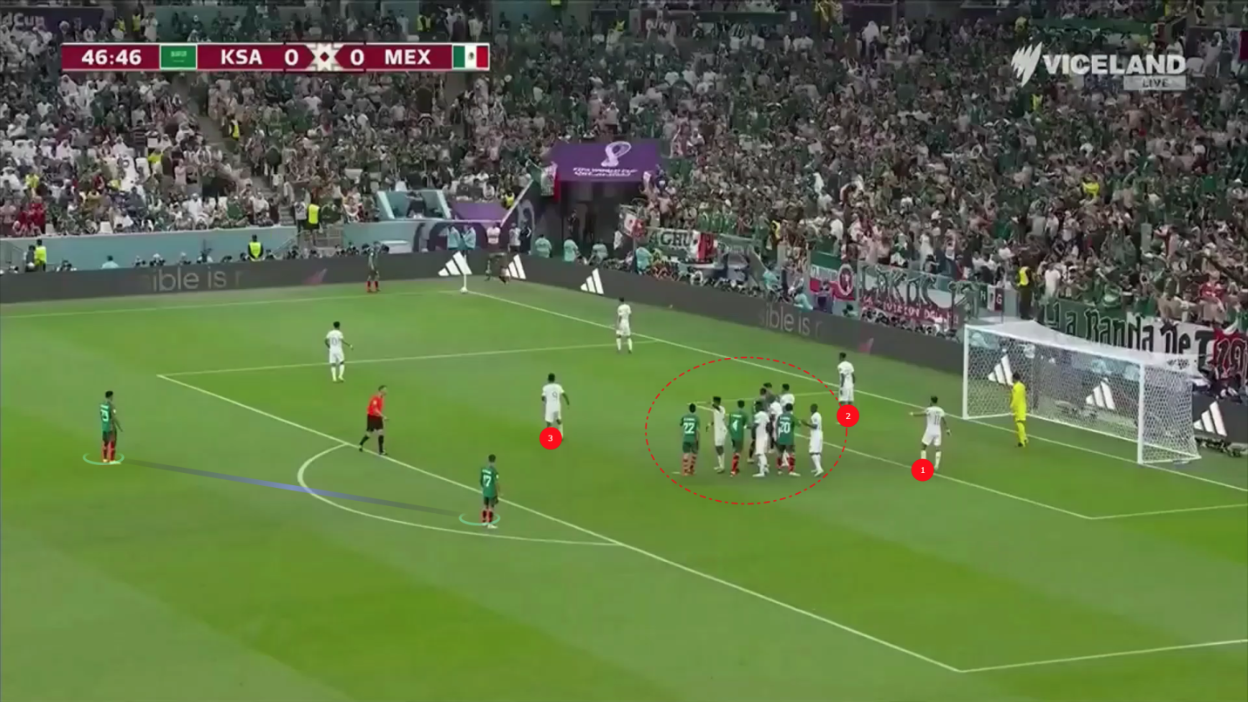
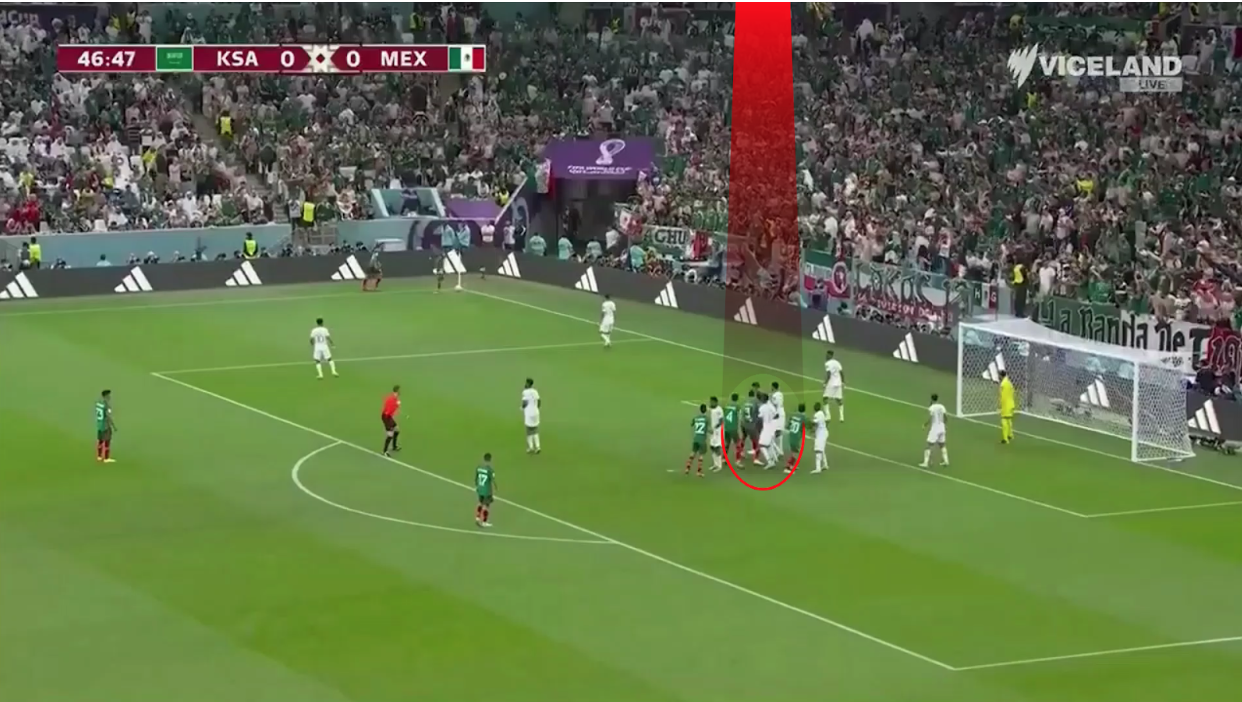


The second goal for Mexico came from a direct free kick, where the kick taker only needed good accuracy as the Saudi Arabia goalkeeper’s ball sight was already blocked by the Mexican player standing in front of him to delay his reaction. It is noticed that the Saudi goalkeeper tried to open an angle to see the ball by moving his head to the right but this also didn’t work well, as he started to react after the ball has passed the Saudi wall.
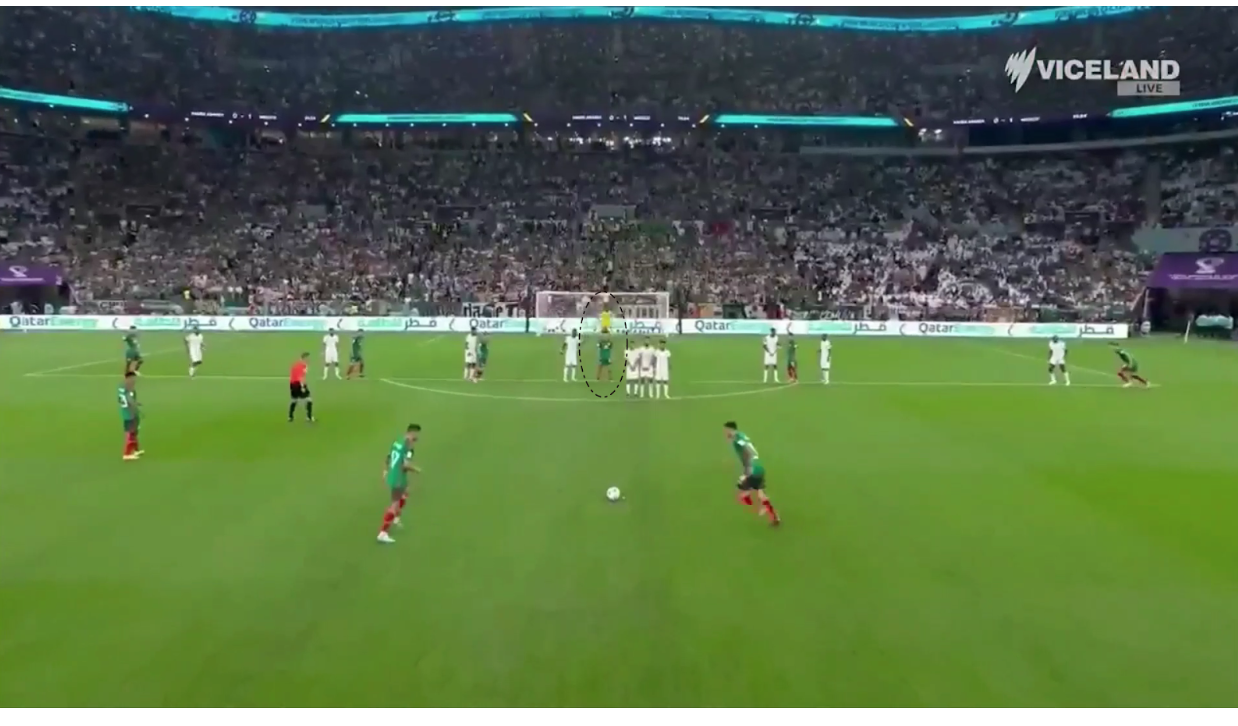

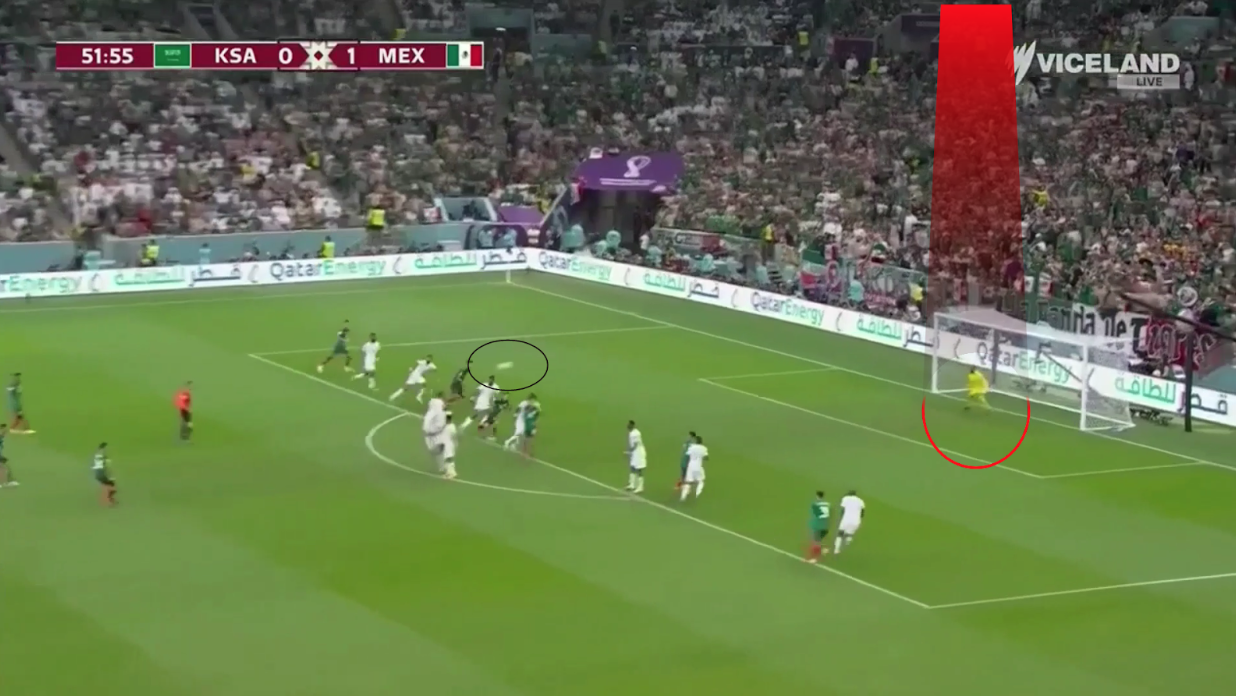
Denmark vs France
- France had two zonal players (at the six yards box), five man markers and two players for second balls at the edge of the box.
- The near post at the edge of six yards box was the targeted zone with an out-swinger.
- Two French players at the near post were dragged by the run of the Danish player at the same area to the “Flick Zone”.
- Two Danish players applied the same “Stack” principle explained above, as the player in behind made his run to the targeted zone by moving towards his teammate’s shoulder to win the first contact by a pass to the far post, while the other blocked the relevant French man marker for the former.
- As all the other Danish players in action moved to frame their opponent’s goal mouth, Andreas Christensen was in a 1V1 situation against Adrien Rabiot, with a positional advantage over him (as Christensen was already aware of the set piece plan) and could reach the ball faster to score.
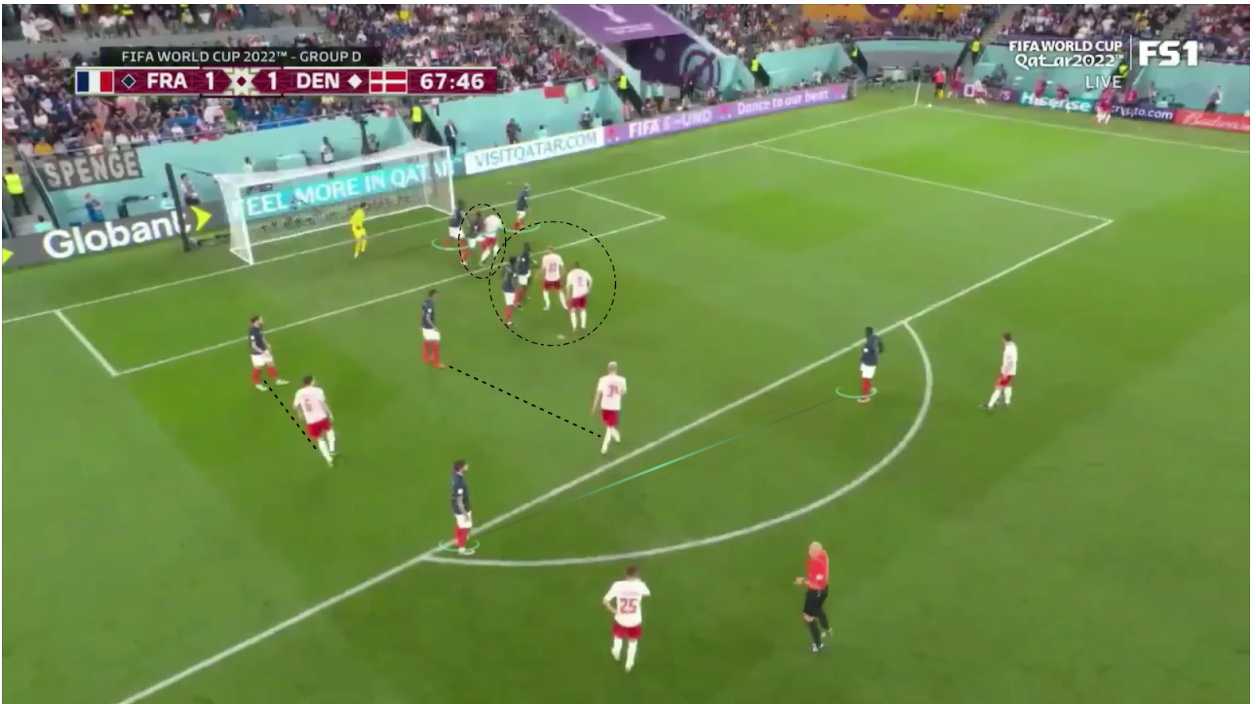


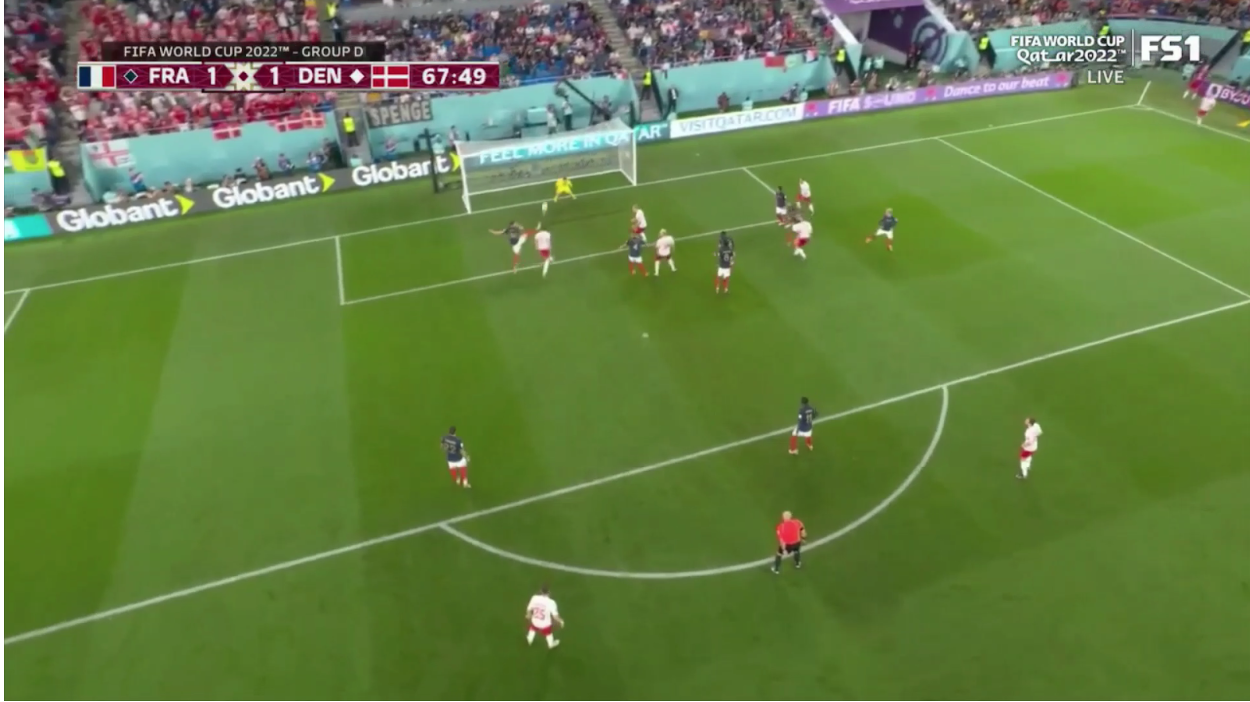
By: Abdelrhman Mounir / @AbdelrhmanMunir
Featured Image: @GabFoligno / Rob Newell – CameraSport
